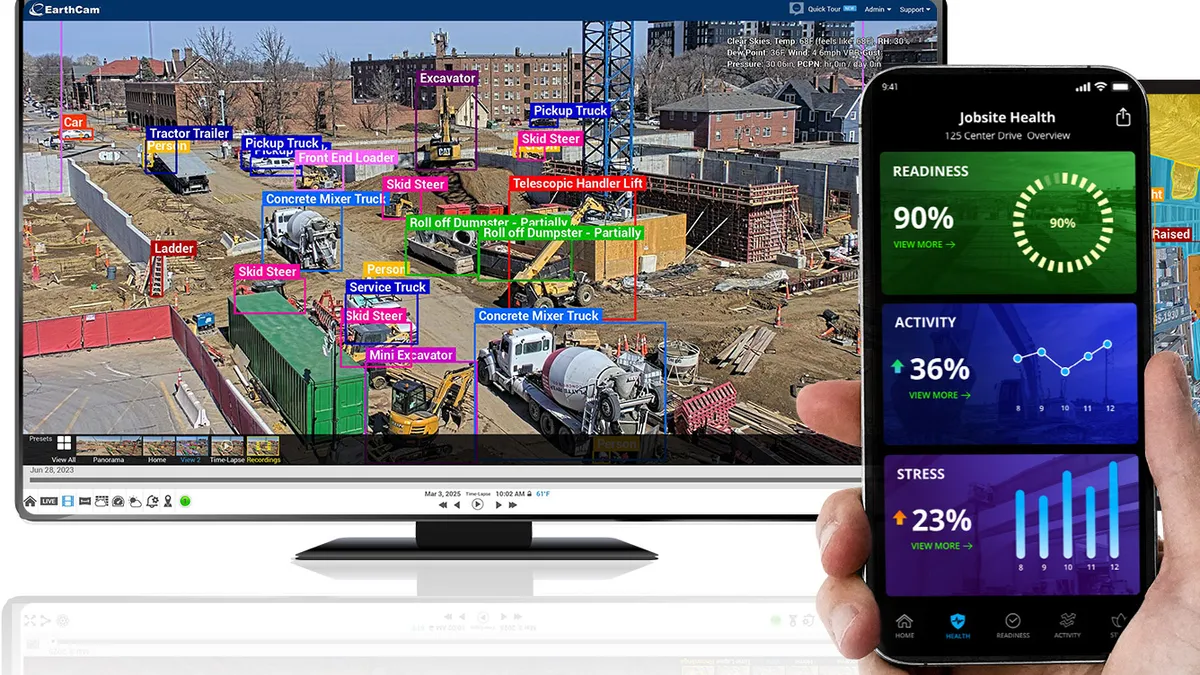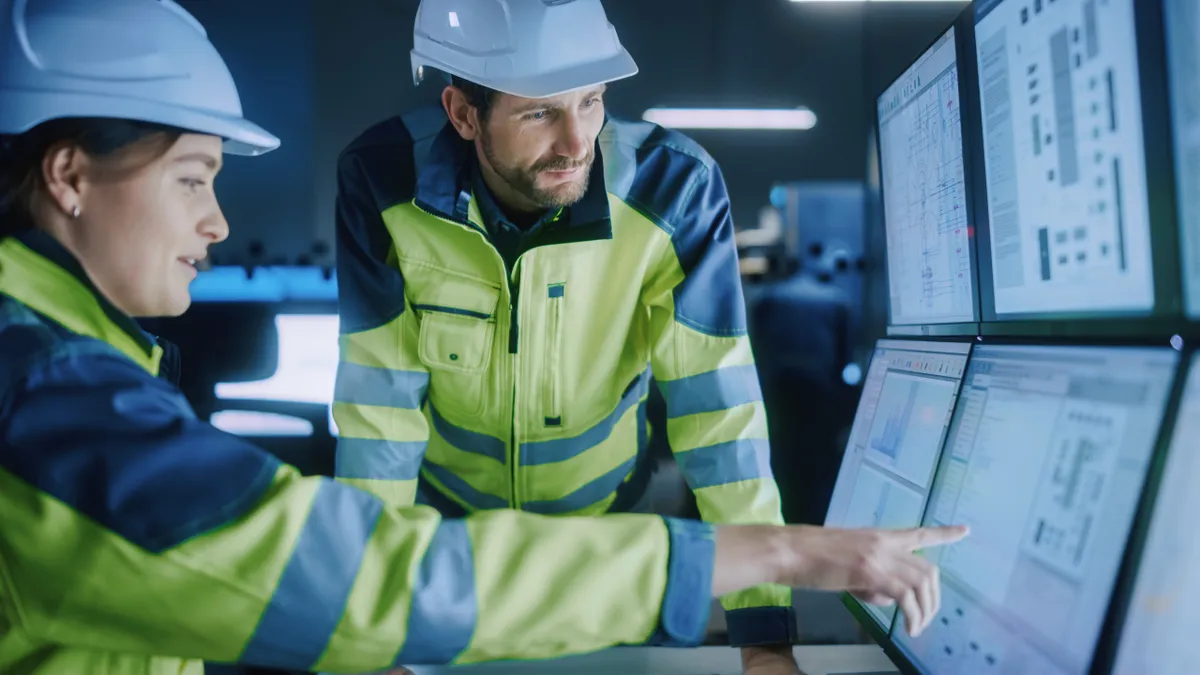Recent advances in AI and BIM could make the Internet of Things (IoT) a game changer for contractors.
For example, jobsite cameras, wearables and drones are just a few pieces of newly accessible technology that’s improving safety, production and engineering, according to Thai Nguyen, Hensel Phelps director of innovation. Indeed, the plummeting cost of IoT technology is rapidly changing the tech landscape on jobsites.
“It’s affordable enough where it’s literally spreading out and really starting to disrupt the industry in many ways,” Nguyen said.
But integrating all the different devices now being used to monitor and collect data on jobsites, from smartphones to drones, is the next big hurdle.
“Really, the story is one of data,” said Jim Zeitunian, chief technology officer for PowerFleet, a software-as-a-service company optimizing mobile asset performance that got its start as an RFID provider in 1993. “We’re building a big data brain. If a construction company is getting over 100 integrations at different levels or specific-use cases with 100-plus different vendors, we’d like to be the data that enhances that data.”
That’s where the potential — and challenges — of today’s jobsite IoT start. IoT devices collect massive amounts of data that then needs to be integrated onto dashboards so contractors can easily visualize and forecast construction progress, productivity and costs in one place.
Meanwhile, AI-powered software can analyze those IoT inputs to provide real-time understanding on those dashboards of everything that’s happening on a project — materials used, scheduling issues and what’s causing delays, cost overruns, site conditions — and take steps to resolve issues without human help.
Yet, like a construction site itself, it’s getting all those different elements to work together that is the real key to success.
“You have so many different technologies and devices collecting data, but it’s all in different formats,” said Mihir Somalwar, corporate innovation lead for Hensel Phelps’ venture capital arm Diverge, which is actively seeking startups that can aggregate and analyze IoT data from multiple projects and sites. “How do you combine them in a central place where you can leverage the power of AI to make sense of it all?”
Integrated delivery evolving
Companies like Zeitunian’s PowerFleet and Exton, Pennsylvania-based infrastructure engineering software company Bentley Systems are trying.
Last year, Bentley acquired IoT software providers Sensemetrics and Vista Data Vision, expanding the scope of its Bentley iTwin platform to automate acquisition and analysis of IoT data, align sensor measurements from physical infrastructure and train algorithms to identify deterioration progression and prioritize repairs.
“Collaboration is really what we’re focused on,” said Rich Humphrey, Bentley’s vice president of construction product management. “We’re not necessarily invested in all the devices, but we’re trying to become the hub that makes sense of all the data in a digital twin environment.”
The opportunity lies in connecting live data feeds from those IoT devices to BIM and digital twins, then leveraging that information with AI to create forecasting, schedules and cost models. IoT-enabled devices can report on changes in materials and environment conditions and update models in real time.
“Integrated digital delivery will continue to evolve where we’re likely to see more interoperability between different IoT ecosystems and technologies like BIM, digital twins and cloud computing,” said Misha Nikulin, managing director at Deloitte’s Engineering and Construction Practice.
Already, Humphrey said, the technology that connects everything is cheaper and less complicated. “Every person who walks around a jobsite with a mobile app is connected to near-real-time data feeds—and almost every contractor has a mobile device in some way, shape or form,” he said.
Data safety = jobsite safety
Another big obstacle, as Nguyen and Somalwar see it, is figuring out how to secure data being collected from multiple devices and systems—all connected to the Internet and easy targets for intrusion.
Contractors will need to thoroughly vet IoT devices before they’re connected to networks and install security tools to constantly monitor the environment
“You’ve got to go back and understand where equipment is being made, where data is being stored, who you’re sharing it with,” Nguyen says. “All these things will be heavy criteria to allow you to grow the use of IoT on jobsites.”





















